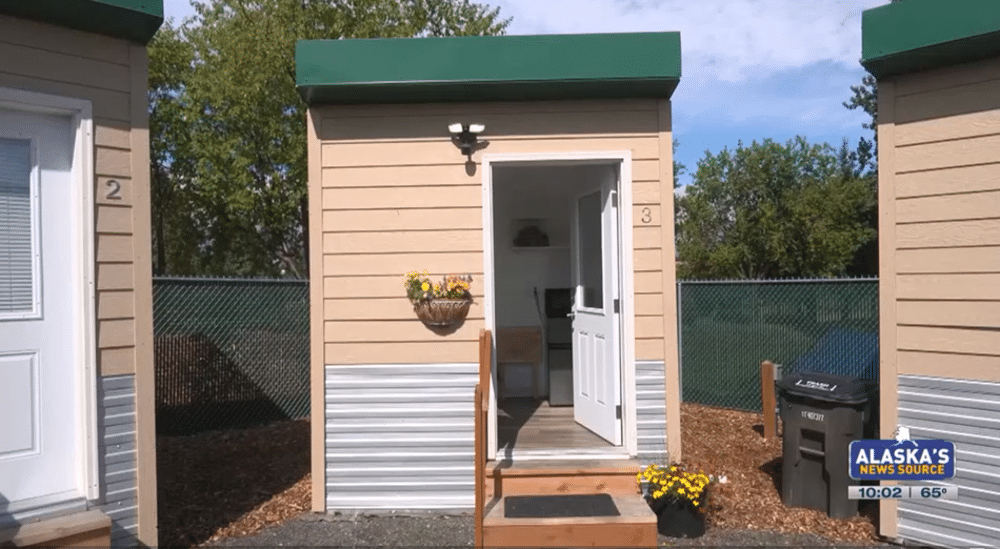Using Micro Units to Lure Addicts Into Addiction Treatment

When you think of addiction treatment facilities, Alaska is probably not the first place that comes to mind. Far from the urban poverty zones that are the last resort for people who have lost everything, Juneau, Alaska, offers stunning views of mountains and glaciers coming down to the water, with a full-employment economy where citizens receive an annual Permanent Fund Dividend just to live there.
Juneau’s scenic beauty and booming economy have some downsides, however. Housing is expensive, with the median house price at $485,000, according to Zillow. And Alaska is bucking the national trend of a decline in opioid overdose deaths. Overdose deaths increased 45% in 2023 and an additional 42% in 2024. This increase has made Alaska a top-10 state for per capita overdose deaths.
Bending the curve on opioid overdose deaths and emergency room visits is not easy. First, it requires widespread distribution of naloxone and training to use it. Naloxone, or Narcan, stops an overdose immediately, helping to restore breathing, allowing time to seek emergency aid. Most of the naloxone distribution and training in the U.S. is funded by SAMHSA through programs that have been targeted for elimination.
When an overdose victim arrives in the emergency room, there is an opportunity to initiate an addiction treatment program. That program can work pretty well in 30 days if the patient can stick it out. The recommended treatment program includes buprenorphine or methadone to reduce cravings and intensive therapy to cope with the life changes.
After 30 days of medicine-assisted therapy, patients are usually ready to transition to assisted housing and re-enter the workforce. From there, it might take 90 days or two years or forever to wean off medication, find steady employment, and no longer require a housing subsidy. The societal savings of approaching addiction recovery in this manner are enormous.
In Juneau, Alaska, however — as in other high-cost cities — getting people through those first 30 days seems impossible. Unless you have enough residential treatment facilities to house people for the first 30 days, it is nearly impossible to get recovering addicts to stick with the program. And if you don’t have long-term housing to transition them into, you will end up treating them one overdose at a time in the emergency room.
That’s why it’s so encouraging that the city of Juneau has embarked upon a new program to provide tiny houses for persons in addiction treatment. The city is building 24 portable micro units on a vacant lot downtown. The tiny houses are only available for as long as people are enrolled in addiction treatment. If they succeed in the program, they are moved into subsidised housing. If they drop out of the program, they lose their tiny house. It’s a dramatic incentive to stay sober.
The term “micro unit” is perhaps more accurate than “tiny house.” These are hardly luxurious accommodations, with less than 100 square feet consisting of a bathroom with a toilet and shower, a small kitchen, and a bed. They can be detached from water, sewer, and electricity, picked up with a forklift, and transported on a flatbed truck.
After a successful pilot program in Anchorage, the city of Juneau received $1.2 million in opioid settlement funds to finance the project. That amounts to $50,000 per unit, which includes common area costs, site development to connect to city utilities, security, and other construction costs. Annual operating costs will be covered under Medicare as long as the facility requires participation in an addiction treatment program.
Compared with other solutions, the Juneau program is extremely fast. Housing will be available this fall, less than six months after securing funding. The cost is also extremely low. The city of Worcester, Massachusetts, embarked on a similar micro-unit plan in 2020, breaking ground in 2022 on a $6 million building with 24 furnished apartments for a finished cost of $250,000 per unit.
After the city of Berkeley, California, realized the cost of building affordable housing is over $400,000 per unit using private developers, the city began looking at tiny houses as an alternative solution to its housing crisis. The main difference is that Berkeley is trying to build more affordable, permanent housing, whereas Juneau is providing temporary housing only while people are in addiction recovery.
A housing-first approach to addiction recovery is not only the most medically effective approach to opioid addiction, it is also the most cost-effective approach. It leads to better outcomes, at lower lifetime costs to hospitals, police, and courts. It reduces time out of the workforce and increases the likelihood that patients will age out of addiction and resume productive, enjoyable lives.
Written by Steve O’Keefe. First published August 7, 2025.
Sources:
“Municipal ‘microunits’ move one step closer to aiding homelessness and addiction,” Alaska’s News Source, August 1, 2025.
“Anchorage plans to open 24 tiny homes for the homeless in October,” Alaska Public Media, August 1, 2025.
“Worcester to begin construction on micro-units for chronically homeless,” WGBH, August 30, 2022.
“Berkeley moves forward on building micro-units for the homeless,” Berkeleyside, February 16, 2017.
Image courtesy of Alaska’s News Source, used under Fair Use: Commentary.




